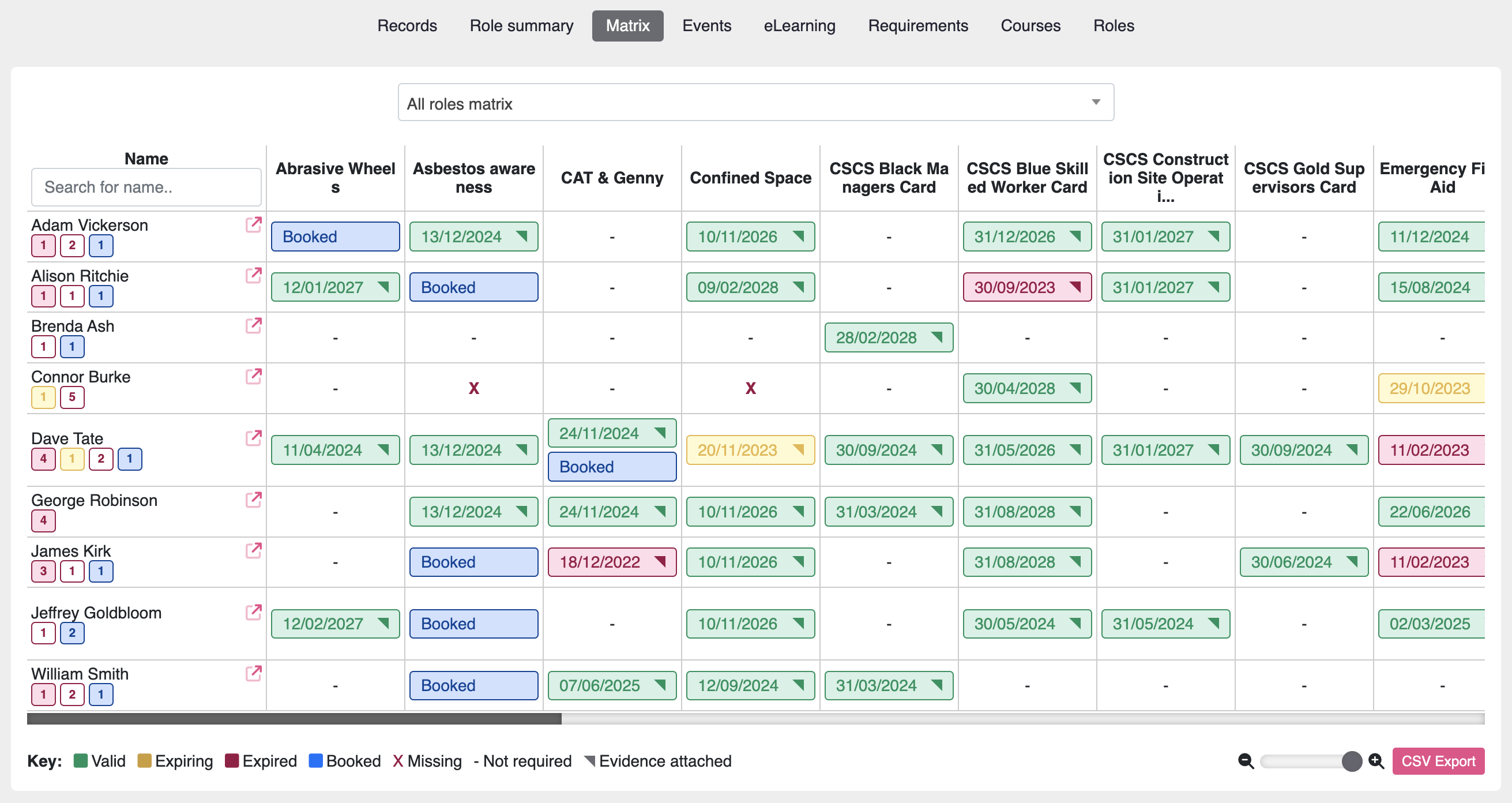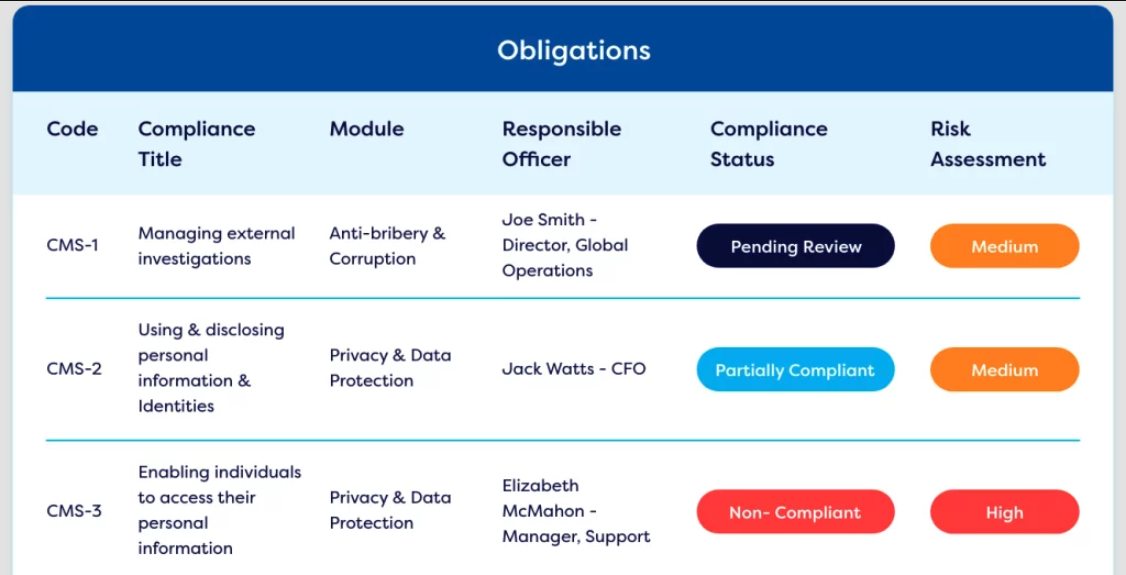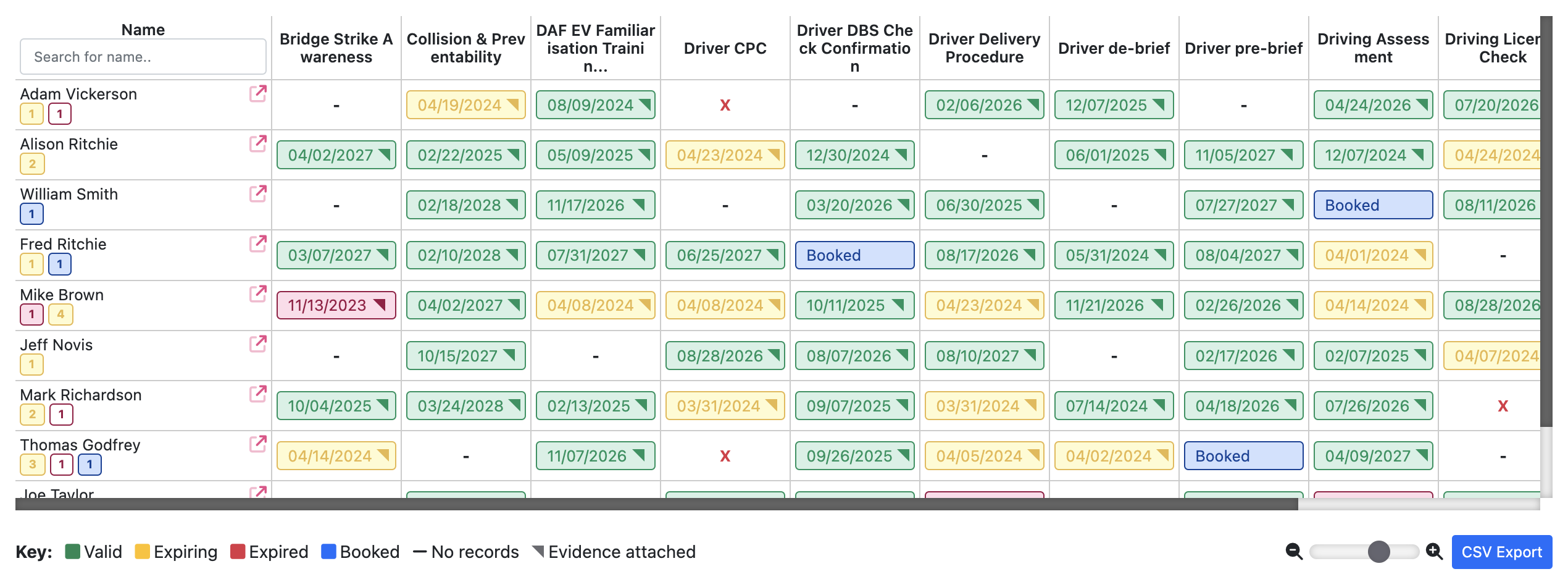Compliance is a necessary aspect of any business, but it can often be a time-consuming and tedious process. With the ever-changing regulations and requirements, it can be challenging to keep up and ensure that your business is meeting all necessary standards without a compliance management system.
In this article, we’ll explore the benefits of implementing a compliance management system and how it can streamline your compliance processes.
What is a Compliance Management System?
A Compliance Management System (CMS) encompasses various areas to ensure that an organization effectively meets its legal obligations and internal policies. Here are the key areas of a CMS:
- Policy and Procedure Management: This area involves the development, documentation, and dissemination of company policies and procedures that align with legal and regulatory requirements. It’s crucial for establishing guidelines on how the organization should operate within the regulatory framework.
- Risk Assessment and Management: This includes identifying, assessing, and managing the risks associated with non-compliance. It involves periodic risk evaluations to understand where compliance risks lie and implementing strategies to mitigate these risks.
- Compliance Training and Education: Providing training to employees on laws, regulations, and company policies that pertain to their job functions is essential. This ensures that all employees are aware of the compliance requirements and understand their roles in maintaining compliance.
- Communication and Reporting Channels: Effective communication channels are necessary for reporting compliance issues or concerns. This could include whistleblower hotlines, open-door policies with management, or other reporting mechanisms.
- Monitoring and Auditing: Regular monitoring and auditing of compliance processes help in identifying and rectifying compliance issues. This includes ongoing reviews of operations and internal controls to ensure compliance with regulatory standards.
- Enforcement and Discipline: Establishing clear consequences for non-compliant behaviors and ensuring consistent enforcement is crucial. This serves to deter violations and reinforces the organization’s commitment to compliance.
- Regulatory Change Management: Keeping abreast of changes in laws and regulations and updating the CMS accordingly. This requires a process for tracking regulatory changes and assessing their impact on the organization.
- Third-Party and Vendor Management: If an organization works with third-party vendors or service providers, it needs to ensure that these external entities also comply with relevant regulations. This could involve due diligence checks and monitoring their compliance status.
- Recordkeeping and Documentation: Maintaining comprehensive records and documentation of compliance activities, including training records, audit reports, and incident management, is essential for demonstrating compliance efforts in case of regulatory scrutiny.
- Incident Management and Response: Having a plan for dealing with compliance breaches, including investigation procedures, corrective actions, and reporting to authorities if necessary.
- Compliance Culture and Leadership: Promoting a culture of compliance within the organization is vital. This involves leadership demonstrating a commitment to compliance and ethical behavior, influencing the organization’s values and norms.
A well-structured CMS addresses these areas, ensuring that an organization can effectively respond to compliance challenges and maintain ethical and legal integrity in its operations.

The Benefits of a Compliance Management System
Implementing a compliance management system can bring numerous benefits to your organization. Here are some of the most significant advantages of using a CMS.
- Increased Efficiency and Productivity:
- Automation of many compliance processes like risk assessments, document management, and reporting.
- Reduction in time spent and minimization of human error.
- Centralized location for all compliance-related information, enhancing access and management.
- Streamlined compliance process for more efficient collaboration among team members.
- Improved Compliance:
- Ensures the organization meets all necessary regulations and requirements.
- Automation and centralization reduce the risk of non-compliance.
- Ability to identify potential compliance issues early and mitigate them.
- Prevention of costly fines and penalties through proactive compliance management.
- Better Risk Management:
- Includes tools for risk assessment to identify and prioritize potential risks.
- Focus on the most critical risks to develop effective mitigation strategies.
- Regular assessment and monitoring to prevent compliance issues.
- Protection against potential legal and financial consequences.
- Enhanced Reporting and Auditing:
- Centralized information storage simplifies report generation and compliance activity tracking.
- Streamlining of the auditing process by having all necessary information readily available.
- Real-time monitoring and reporting for a more accurate and current view of compliance activities.
- Benefit during audits due to reduced time and effort in information gathering and presentation.

How to Implement a Compliance Management System
Implementing a compliance management system may seem like a daunting task, but it doesn’t have to be. You can utilise a huge range of compliance management system software. Here are some steps to help you get started.
Identify Your Compliance Requirements
The first step in implementing a compliance management system is to identify your organization’s compliance requirements. This includes any regulations, laws, or internal policies that your business must adhere to.
Once you have a clear understanding of your compliance requirements, you can begin to develop a plan for how a CMS can help you meet them.
Choose the Right CMS
There are many compliance management systems available, so it’s essential to choose one that meets your organization’s specific needs. Consider factors such as the size of your organization, the complexity of your compliance requirements, and your budget when selecting a CMS.
It’s also crucial to choose a CMS that is user-friendly and integrates well with your existing systems. This will make it easier for your team to adopt and use the CMS effectively.
Train Your Team
Once you have chosen a CMS, it’s essential to train your team on how to use it effectively. This includes training on how to use the CMS itself, as well as any new processes or procedures that may be implemented as part of the CMS.
Training is crucial to ensure that your team understands the importance of compliance and how the CMS can help them meet their compliance requirements.
Regularly Review and Update Your CMS
A compliance management system is not a one-time implementation; it requires regular review and updates to remain effective. As regulations and requirements change, your CMS must adapt to ensure that your organization remains compliant.
It’s essential to regularly review your CMS and make any necessary updates to ensure that it continues to meet your organization’s needs.
Integrating a Training Management System into Your Compliance Strategy
A vital component in enhancing a compliance management system (CMS) is the integration of a training management system (TMS). This is where cloud based software such as Moralbox.com comes into play, offering a robust solution to ensure all staff members are comprehensively trained and compliant, thus safeguarding your organization’s adherence to necessary standards.
A TMS distinguishes itself by offering features that directly address the challenges of maintaining compliance across an organization:
- Ensuring Staff Compliance: Moralbox.com’s platform focuses on ensuring that every staff member is trained in accordance with their specific roles and the compliance requirements that govern those roles. This targeted training approach is critical for maintaining organizational compliance.
- Customizable Training Modules: The system offers customizable training modules, enabling organizations to tailor their training programs to specific regulatory requirements or internal policies.
- Compliance Monitoring and Reporting: With real-time monitoring and reporting capabilities, Moralbox.com allows organizations to keep a pulse on their compliance status, offering insights into areas where additional training might be required.
- Streamlined Training Process: By integrating training management within the broader compliance management framework, Moralbox.com streamlines the process, making it easier for organizations to manage, track, and update their training requirements.
- User-friendly Interface: The platform’s intuitive design ensures that staff members can easily engage with their training materials, thereby increasing compliance and reducing the risks associated with non-compliance.
By adopting a training management system as part of your CMS, your organization can not only increase its efficiency and productivity but also significantly enhance its compliance posture. This integration ensures that your business remains agile in the face of changing regulations and internal policies, while also fostering a culture of continuous learning and compliance awareness among your employees.
Who is Responsible for Compliance Management?
Implementing a compliance management system requires collaboration between various departments within an organization. However, the responsibility for managing compliance ultimately falls on the compliance team.
The compliance team is responsible for identifying compliance requirements, implementing a CMS, training employees, and regularly reviewing and updating the CMS.
Takeaways
A compliance management system is a comprehensive approach to managing and monitoring compliance with regulations, laws, and internal policies. It can bring numerous benefits to organizations, including increased efficiency and productivity, improved compliance, better risk management, and enhanced reporting and auditing.
Implementing a CMS requires identifying compliance requirements, choosing the right CMS, training your team, and regularly reviewing and updating the system. By implementing a compliance management system, organizations can streamline their compliance processes and ensure that they are meeting all necessary requirements.

Alison is the Moralbox Customer Success Manager. She ensures that our customers enjoy the benefits and get the very best experience out of our products. Alison has over 8 years experience as a training manager.


